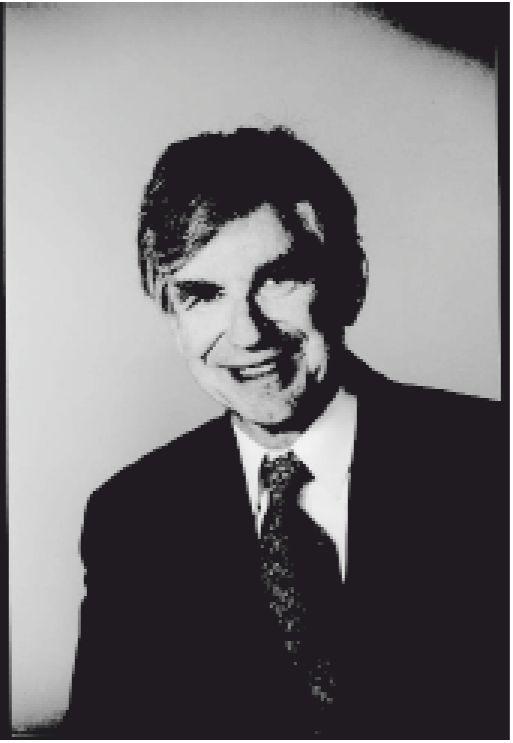Laura Bonetta
Charles J. Epstein
At this year’s meeting in San Diego, the American Society for Human Genetics (ASHG) bestowed its highest honor on Charles J. Epstein, professor of pediatrics at the University of California at San Francisco, Epstein, who almost lost his life in 1993 when he opened a package from the unabomber Theodore Kaczynski, joins the list of ‘greats’ in genetics who received the societys prestigious William Allan Award. (Previous award winners include Victor McKusick, Frank Ruddle, Sir Walter Bodmer, Mary Lyon, Sir Alec Jeffreys and Bert Vogelstein).

Charles Epstein has seen the field of human genetics evolve from the birth of cytogenetics to that of genomics and says it is now at a critical crossroads, when medical geneticists need to redefine their roles. “I often joke that when I started medical school I had 48 chromosomes and by the time I finished I had 46,” says Epstein, referring to the leaps in knowledge that have taken place during his career.
He obtained his MD from Harvard Medical School in 1959, and like many physician-scientists of his generation, received basic research training at the National Institutes of Health (NIH). where he spent several years in the laboratory of Nobel Laureate Christian Anflnsen. Afterwards he worked for a year with human geneticist. Arno Motulsky. in Seattle.
Eptein’s career has blended basic research with clinical practice. He believes there are unique opportunities for MDs in biomedical research, but acknowledges, ‘it is hard to be 50/50.” As medicine becomes more complex and research more competitive. physician-scientists need to be careful in carving out an area in which to do research.
Epstein’s own research in developmental biology has made major inroads into the understanding of genetic diseases. What he is perhaps best known for is the development of the chromosome 16 trisomy mouse as a model for Down syndrome. work that he initialed with his wife Lois and then postdoctoral fellow, David Cox. The interesting thing is that one can see parallels with humans in the developmental defects in the mouse. Yet, although we can define all kinds of abnormalities in the mouse, it’s hard to know what is going on in humans.” One of the major obstacles in correlating observations In the mouse to the human diseases is that approaches to measure brain function non-lnvaslvely in humans are severely limited.
Epstein’s mouse paved the way for a strain of mice that have only portions of chromosome 16 duplicated ‘segmental trisomies’ which are even closer to modeling the human disease. There Is currently no therapy to cure the neuronal deficits of Down syndrome patients. To identify genes that play critical roles In the condition—and are thus potential targets for therapy—Epstein’s group is developing a series of mice that differ in their amounts of chromosome 16 trisomy in order to compare phenotypes.
In commenting on Eptein’s research contributions at the annual ASHG meeting this year, president Huntington Willard said the society had not kept up with the changes and growth in the field of genetics by reaching out to researchers in genomics and gene therapy. However, Epstein (a former ASHC president), expects that as genomics research loses its technology focus and becomes more applied, and gene therapy becomes more focused on traditional genetic diseases, these disciplines will become the ‘bread and butter’ of so ciety meetings.
The disciplines will also become increasingly Important in clinical medicine. “What we hear most is that gene testing will give us the ability to tell who is at risk for what.” he says. What is not clear, however. is whether primary physicians will be in a position to interpret the results of increasingly complex genetic data for patients. As president-elect of the American College of Medical Genetics (ACMG) Epstein plans to focus on “defining the cole of medical genetics in the new medical arena,” possibly using as a model the cancer risk programs that have been started at several medical centers, in which oncologists, medical geneticists and genetic counselors, work together.
Another contentious issue in the field is how to deal with the possibility that employers or insurance companies will use genetic information to discriminate against individuals. In June, the ACMC issued a statement calling for comprehensive federal legislation to protect all Americans. In particular, says Epstein ‘we need to Improve on privacy matters and control the flow of medical information.”
Part of what gives Epstein a unique perspective into the field of genetics and its evolution over time, is that he was a member of the NIH Recombinant DNA Advisory Committee (or RAC) at a “critical time [from 1935 to 1990] when RAC stopped debating hypothetical questions and actually got involved in dis- cuslng gene therapy trials.” He believes that the RAC review procès was a valuable step In ensuring that both the science and patient protection considerations warranted carrying out a protocol. During its existence the RAC came under criticism from those who said that it was holding back the Held, so much so that the NIH director at the time. Harold Var mus, took steps to reduce RAC’s oversight powers. ‘I believed then and still believe that [the Varmus decision] was a big mistake,” says Epstein, ‘It did not serve the gene therapy field well”
Epstein refutes the argument that research was needlessly being delayed by RAC’s review procès. He recalls that during one of RAC meetings, which were open to the public, a researcher got up and said “as you are debating, patients are dying.” But looking back, no lives were lost because of the RAC’s cautious approach.
Laura Bonetta, Bethesda
